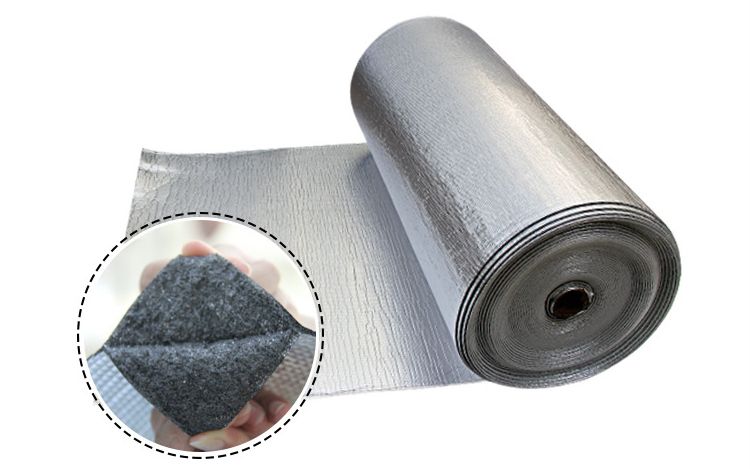-
Is aluminum foil a good insulator? This simple question often sparks curiosity among homeowners, DIY enthusiasts, and anyone looking to maintain ideal temperatures—whether in the kitchen or around the house. Aluminum foil’s shiny appearance and seemingly lightweight structure can be deceptive, leaving many people unsure about how well it really insulates. In this article, we’ll explore the fundamentals of how insulation works, uncover key facts about aluminum foil, and share practical tips on making the most of its properties.

The Basics of Insulation
Insulation is all about minimizing heat transfer from one space to an
Read morePosted: November 21, 2025 -
Energy costs keep climbing, and many sheds, barns, and light-commercial spaces suffer from scorching summer peaks and chilly drafts. Reflective aluminium foil insulation—also called a radiant barrier or reflective insulation—targets radiant heat, the dominant driver of roof/attic heat gain. For contractors, farm owners, shed/garage builders, distributors, and capable DIYers, it’s a lightweight, fast way to tame hot spots, reduce loads, and control condensation without gutting walls.
Soft value add: Wellco Wholesale supplies factory-direct rolls (foil-foil, white-foil, bubble or foam cores), custom widths, and bundled accessories (foil tapes, fasteners). That means one spec, one PO, and fewer delivery delay
Read morePosted: November 13, 2025 -
Choosing between reflective foil bubble wrap insulation (RFB) and foam is not a simple “what’s the highest R-value?” question. It’s a decision about heat transfer modes, condensation risk, installation realities, and code triggers. This guide compares how each system works, where each wins, and when a hybrid delivers the best comfort per dollar.
Who it’s for: contractors, facility managers, ag/pole-barn builders, and serious DIYers weighing cost, moisture control, and code compliance.
About sourcing: Wellco Wholesale is a fact
Read morePosted: November 06, 2025 -
When a building bakes in the sun, most of the heat arrives as radiant energy. That’s where reflective systems shine: they bounce radiant heat instead of absorbing it. This guide shows trade buyers and serious DIYers how reflective foil assemblies work, where they fit (attics, pole barns, metal buildings, vans, ducts), and how to spec and install reflective foil insulation rolls for reliable results.
Expectation check: Performance depends on the assembly—you need an air gap facing the foil, sealed seams, and ventilation or vapor control where required.
Read morePosted: October 30, 2025 -
Summer bills spiking? Many homeowners hear that a radiant barrier “reflects 97% of heat,” but the real question is: is reflective foil insulation for attic assemblies actually worth it for your climate, roof, and budget? This optimized guide explains how it works, where it makes a difference, realistic savings, safe installation methods, and what to buy—plus a quick ROI table so you can make the call.
For trade and multi-site buyers: Wellco Wholesale can supply bulk rolls, custom widths, private-label cartons, and tape/furring kits to standardize specs across jobs—no hard sell, just reliable fulfillment.Read morePosted: October 23, 2025 -
Reflective foil insulation controls radiant heat—slowing heat gain in hot weather and limiting heat loss in cooler seasons—when it’s paired with properly detailed air gaps and sealed seams. It shines in attics, metal buildings, garages, and around ducts where radiant load dominates. This guide walks pros and serious DIYers through reflective foil insulation installation from planning to QA/QC, with climate notes, safety checks, and field-proven tips.
Author note: I’ve spent 9+ years working on building envelopes from post-frame shops to multifamily rehabs; the steps below reflect what crews actually do on ladders.
Resource note: As a one-stop, factory-direct wholesaler,Read morePosted: October 16, 2025 -
When should reflective foil roof insulation (radiant barrier) beat fiberglass (thermal blanket)—and when is the hybrid approach the real champion? Short answer: radiant barriers slash radiant heat gain in sun-soaked roofs (especially metal), while fiberglass delivers the R-value that codes require in every climate. Most trade buyers get the best comfort and ROI by combining them. For streamlined procurement, Wellco Wholesale can palletize foil rolls, compatible tapes, ridge/soffit vents, and fiberglass formats in one mixed-SKU shipment for farms, landscapers, and light commercial projects.
Read morePosted: September 25, 2025 -
Energy bills and comfort complaints often trace back to underperforming walls. Reflective foil wall insulation—a radiant-control layer—reduces radiant heat transfer when it faces an adjacent air space, complementing the conductive resistance you get from batts or foam. Used in the right place (sun-loaded walls, hot/mixed climates), it can trim peak loads and even out room temperatures with minimal thickness.
Supplier context: Wellco Wholesale supports trade buyers and serious DIYers with bulk foil rolls, matched tapes, furring, and custom widths/lengths—useful if you’re kitting multiple job sites without waste.
Read morePosted: September 18, 2025 -
Rising energy bills and uncomfortable building temperatures are common frustrations for property owners, whether you're managing a large farm or just trying to keep your garage workshop usable in the summer. You’ve likely heard about various insulation solutions, but one that often raises questions is reflective insulation foil. Is it just shiny wrapping, or is it a high-performance material that can make a real difference?
As a wholesale supplier of building and farm supplies, we at Wellco Wholesale have seen firsthand how the right materials can transform a space. This guide will cut through the noise, explaining exactly what reflective insulation foil is, where it excels, where it falls short, and ultimately, help you decide if it's a worthwhile investment for your project.
Read morePosted: September 12, 2025 -
Energy prices may fluctuate, but one fact stays constant: radiant heat can account for more than half of summertime heat gain in attics and metal-skin buildings. That’s why many pros—and an increasing number of savvy DIYers—are turning to reflective multi layer foil insulation (RMLFI). By bouncing infrared energy instead of absorbing it, a few millimeters of foil and air gaps can outperform bulky fiberglass in hot climates. I still remember the first weekend I stapled a twin-foil roll inside my own garage roof: a sharp knife, a hammer-tacker, and two hours later the space felt instantly cooler to the touch. If you need pallet-sized quantities, Wellco Wholesale—an ISO 9001–certified, factory-direct source of garden, farm, and light-building supplies—
Read morePosted: September 04, 2025

